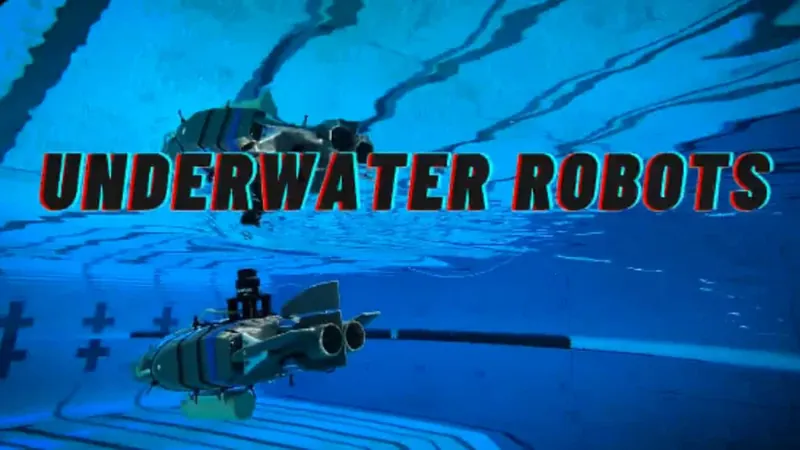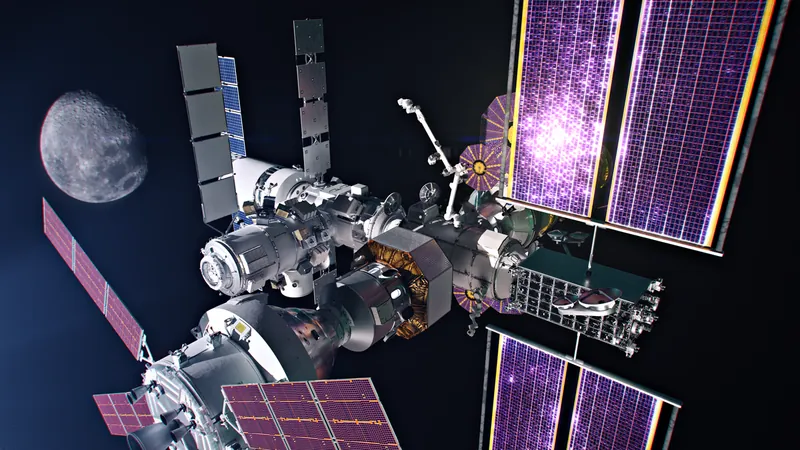
NASA's Revolutionary Robotic Swimmers Set to Explore the Mysterious Oceans of Jupiter's Moons!
2024-11-21
Author: Li
NASA’s Revolutionary Robotic Swimmers!
NASA has recently unveiled an exciting new development that promises to revolutionize our understanding of the underwater mysteries lurking beneath the icy surfaces of Jupiter’s moons, particularly Europa, as well as Saturn’s enigmatic Enceladus.
Introducing SWIM
The innovative robot concept, named Sensing With Independent Micro-swimmers (SWIM), has been developed by the Jet Propulsion Laboratory (JPL). Weighing over 2 kilograms and measuring nearly 16.5 inches in length, these futuristic robots are currently undergoing testing in pools, showcasing their ability to maneuver in simulated ocean environments.
Mission Objectives
NASA's ambitious plan includes deploying several of these small, self-propelled robots into the depths of these moons, each of which is three times smaller than conventional autonomous underwater vehicles. Their key mission? To search for vital temperature and chemical signals that could indicate the presence of life.
Advanced Technology
Equipped with advanced communication and GPS systems, the SWIM robots will navigate the frigid waters beneath the ice, employing sophisticated instruments to analyze the chemicals that suggest the potential for habitability. This capability could provide unprecedented insights into the subsurface oceans that many scientists believe harbor the conditions necessary for life.
Current Status and Future Plans
The video shared by JPL from their prototype tests demonstrates the robots’ potential, though it's essential to note that they remain in the concept phase, pending funding and approval for further development.
The Allure of Europa and Enceladus
The allure of exploring Jupiter’s moons stems from the growing evidence that indicates the presence of hidden oceans. Scientists have expressed profound interest in the possibilities these moons offer, stemming not just from Europa and Enceladus but also from other celestial bodies such as Titan and Ariel.
International Collaboration
Motivated by these incredible possibilities, both NASA and the European Space Agency (ESA) have ramped up their exploration missions this year. Notably, ESA's Jupiter Icy Moons Explorer (JUICE) spacecraft launched in April to investigate Europa, Callisto, and Ganymede. Shortly after, NASA's Europa Clipper probe was set to closely examine Europa's surface and the ocean beneath.
Looking Ahead
Both of these missions are slated to begin their detailed exploratory work in the early 2030s, when they reach their intended destinations. Additionally, NASA is gearing up for its Dragonfly mission, which aims to study Titan, Saturn's largest moon, suspected to house its own subsurface ocean. This ambitious mission will deploy a drone that will fly across Titan, searching for signs of "prebiotic" conditions that could shed light on the origins of life in our solar system.
Conclusion
Stay tuned—the future of space exploration is here, and it's taking us deeper than ever before!



 Brasil (PT)
Brasil (PT)
 Canada (EN)
Canada (EN)
 Chile (ES)
Chile (ES)
 España (ES)
España (ES)
 France (FR)
France (FR)
 Hong Kong (EN)
Hong Kong (EN)
 Italia (IT)
Italia (IT)
 日本 (JA)
日本 (JA)
 Magyarország (HU)
Magyarország (HU)
 Norge (NO)
Norge (NO)
 Polska (PL)
Polska (PL)
 Schweiz (DE)
Schweiz (DE)
 Singapore (EN)
Singapore (EN)
 Sverige (SV)
Sverige (SV)
 Suomi (FI)
Suomi (FI)
 Türkiye (TR)
Türkiye (TR)